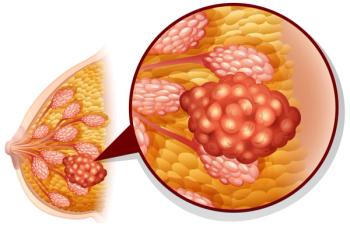
Long-Term Follow-Up Spotlights Ongoing Positive Outcomes With Selpercatinib in RET Fusion–Positive Cancers
Patients with RET fusion–positive solid tumors continued to experience benefit from treatment with selpercatinib, according to extended follow-up from the phase 1/2 LIBRETTO-001 basket study.
Treatment with selpercatinib (Retevmo) yielded promising long-term responses and survival in patients with RET fusion–positive solid cancers, according to extended follow-up of the phase 1/2 LIBRETTO-001 basket study (NCT03157128).
Investigators reported an overall response rate (ORR) of 44% (95% CI, 29%-60%), a duration of response of 24.5 months (95% CI, 9.2-not estimable [NE]), a median progression-free survival (PFS) of 13.2 months (95% CI, 7.4-26.2), and an overall survival (OS) of 18.0 months (95% CI, 10.7-NE) in the RET fusion-positive tumor agnostic population (n = 41). Across a wide variety of RET fusion-positive solid tumor types, selpercatinib has demonstrated efficacy in pancreatic, salivary, and colon cancer. Results were presented in a poster by Vivek Subbiah, MD, during the
LIBRETTO-001 (NCT03157128) is a multicenter study with a phase 1 and phase 2 dose expansion portion that enrolled patients with locally identified RET alterations (n = 461). The basket trial format included patients diagnosed with non–small cell lung cancer (n = 360), thyroid cancer (n = 56), and other cancers (n = 45). Vivek addressed the efficacy population (n = 41) in the other cancers basket during this presentation. This population included patients who were enrolled for a minimum of 6 months prior to data cut off.
The primary end point was ORR as determined by independent review committee, and secondary end points included duration of response, PFS, OS, and safety. The median age of patients was 53 years (range, 21-85), there were slightly more females (51%) than males, and the majority of the population was White (69%). Sixty percent of patients had an ECOG performance status of 1 and 33% had a performance status of 0. Patients had a median of 2 prior systemic therapies, the majority (60%) had 1 to 2 lines of systemic therapy, and 31% had 3 or more lines of systemic therapy.
“Approximately 58% of the patients had treatment refractory gastrointestinal cancers with limited therapy options,” Subbiah, associate professor in the Department of Investigational Cancer Therapeutics and medical director of the Clinical Center for Targeted Therapy at The University of Texas MD Anderson Cancer Center, said. Investigators reported that 12 patients (26.7%) had pancreatic cancer and 10 patients (22.2%) had colon cancer.
Efficacy data (n = 41) revealed that 5% had a complete response, 39% had a partial response, 34% had stable disease, and 7% had progressive disease. At a median follow-up of 14.9 months, duration of response at 1 year was 73.7% (95% CI, 43.9%-89.3%).
At a median follow-up of 16.4 months, PFS at 1 year was 53.1% (95% CI, 34.1%-68.8%). At a median follow-up of 18.8 months, OS at 1 year was 66.8% (95% CI, 48.6%-79.8%). “It is important to emphasize that these median point estimates remain immature,” Subbiah cautioned.
When reviewing efficacy by tumor type, investigators noted complete responses were observed in 1 patient with breast cancer and 1 patient with cancer of the small intestine. Overall, responses were observed in tumor types with data in at least 2 evaluable patients, and activity was observed across multiple RET fusion partners.
Subbiah commented that the tumor response waterfall plot “depicts the responses observed in patients with measurable disease, including 1 follow-up assessment. Eighty percent of patients demonstrated reduction in tumor size.”
Regarding antitumor activity, investigators reported a median time to respond of 1.9 months and a median duration of response of 24.5 months, with half of the responses still ongoing at the data cut-off.
Reviewing safety, Subbiah said, “The safety profile among these 45 patients was consistent with prior reports in the overall population, with no new safety signals identified.” In patients with at least 1 any grade adverse event (AE) from any causality (n = 45), 42% experienced increased alanine aminotransferase, 38% had increased aspartate aminotransferase, and 33% experienced dry mouth. The most common grade 3 or higher AEs were hypertension (22%), increased alanine aminotransferase (16%), and increased aspartate aminotransferase (13%). Regarding treatment related AEs, the most common any grade AEs were increased alanine aminotransferase (33%), increased aspartate aminotransferase and dry mouth at 29% each. Most common treatment-related grade 3 or worse AEs were increased alanine aminotransferase (16%), increased aspartate aminotransferase (11%), and hypertension (13%).
Overall, the investigators reported that selpercatinib continues to demonstrate promising activity across a wide variety of RET fusion-positive solid tumors, including treatment refractory gastrointestinal malignancies.
“These analyses reiterate the importance of broad-based genomic profiling to identify actionable oncogenic drivers including RET fusions,” Subbiah said. “The safety and efficacy selpercatinib will continue to be explored in the LIBRETTO-001 study, which is still enrolling patients with RET fusion-positive solid tumors,” concluded Subbiah.
Reference
Subbiah V, Wolf J, Konda B, et al. Tumor agnostic efficacy of selpercatinib in patients with RET fusion+ solid tumors: A global, multicenter, registrational trial update (LIBRETTO-001). J Clin Oncol. 2022;40(suppl 16):3094. doi:10.1200/JCO.2022.40.16_suppl.3094
Newsletter
Stay up to date on recent advances in the multidisciplinary approach to cancer.




